Summary of the Article
Have a project in mind?
Schedule a CallDesign Patterns: A deep dive into Facade and Strategy Patterns
Summary of the Article
Introduction
Design patterns are fundamental to the success of software developers as they provide them with a set of tried and tested solutions to common programming problems. By implementing these patterns, developers can create software applications that are not only efficient but also scalable and maintainable.
However, to ensure that their software design is top-notch, developers must adhere to the SOLID principles. These principles provide a set of guidelines that help developers write code that is easy to maintain, understand, and modify. Therefore, it is essential for developers to have a good understanding of SOLID principles to create software applications that are robust and reliable.
Let’s take a quick look at SOLID principles.
S.O.L.I.D
Single Responsibility Principle:
This principle states that a class should have a single responsibility. In other words, it should have one and only one reason to change, making it easier to maintain and modify.
Open-Closed Principle:
This principle suggests that a class should be open for extension but closed for modification ensuring that changes to one part of the codebase do not affect others.
Liskov Substitution Principle:
This principle advises developers that subtypes should be substitutable for their base types without breaking the code’s functionality.
Interface Segregation Principle:
This principle dictates that clients should not be forced to depend on methods they do not use, reducing the likelihood of errors and making the code more maintainable.
Dependency Inversion Principle:
This principle recommends that classes should depend on abstractions, not concrete implementations, which enables a flexible and extensible architecture.
What are design patterns?
Design patterns are reusable solutions to common software design problems. They are general solutions that can be applied to a wide range of software development challenges. Design patterns provide a shared language and best practices for software developers to create more maintainable, scalable, and modular code.
Design patterns are divided into three main categories:
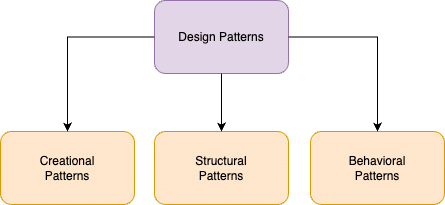
Creational Patterns:
These patterns deal with object creation and provide ways to create objects without explicitly calling a constructor.
The creational patterns include Singleton, Factory Method, Abstract Factory, Builder, etc.
Structural Patterns:
These patterns deal with the composition of classes and objects to form larger structures.
The structural patterns include Adapter, Bridge, Flyweight, Proxy, Facade, etc.
Behavioral Patterns:
These patterns deal with communication between objects and provide ways to communicate between objects in a predictable and organized manner.
The behavioral patterns include Command, Interpreter, Iterator, Mediator, Memento, Observer, State, Strategy, Visitor, etc.
Why do we need to learn about design patterns?
There are several benefits to learning design patterns. Some of them are discussed below:
-
Reusability:
Design patterns provide reusable solutions to common software design problems. Once a design pattern has been implemented and tested, it can be used again and again in different parts of a software system. This can save developers time and effort, as they do not have to reinvent the wheel every time they encounter a similar problem. -
Maintainability:
Design patterns promote modularity and encapsulation, making it easier to maintain and update a software system. By separating concerns and using well-defined interfaces, developers can modify and extend parts of the system without affecting other parts. This can help to reduce the risk of introducing bugs or breaking existing functionality.
-
Best Practices:
Design patterns are based on industry best practices and have been tested and proven over time. By following established patterns, developers can create code that is more consistent, reliable, and maintainable. This can help to reduce the risk of errors and improve the overall quality of the software system. -
Career Growth:
Learning design patterns can improve a developer’s skillset and increase their value in the job market. Knowledge of design patterns is often considered a key skill for software developers, especially in senior or leadership roles.
-
Communication:
Design patterns provide a common language and framework for discussing software design. By using established practices, developers can communicate more effectively and collaborate more efficiently. This can help to reduce misunderstandings and improve team productivity.
Overall, learning design patterns can help developers to create more flexible, maintainable, and scalable software systems, while also improving their skills and career prospects.
There are about 23 patterns defined and explained in the book ‘Design Patterns: Elements of Reusable Object-Oriented Software’. But in this article, we will look into two commonly used patterns – facade and strategy.
Both patterns have practical applications in real-world projects and understanding them can greatly improve the quality of software design and development. Let’s take a look at each of them in depth one by one.
Facade Pattern
The Facade pattern is a structural design pattern that provides a simplified interface to a complex system of classes, making it easier to use and understand. It is often used to hide the complexity of a system and provide a single entry point for clients to access the system’s functionality.
Let’s consider an example where we want to build a home automation system that can control various electronic devices such as lights, TV, and air conditioning. We can create classes for each device and provide methods to turn them on and off, adjust the volume or temperature, etc. However, this can result in a complex system with a lot of classes and methods, which can be difficult to use and maintain.
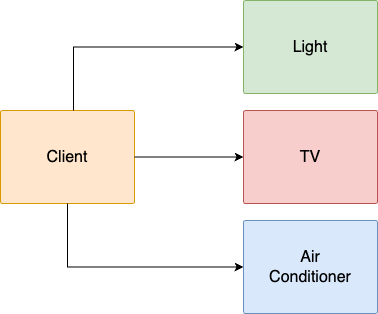
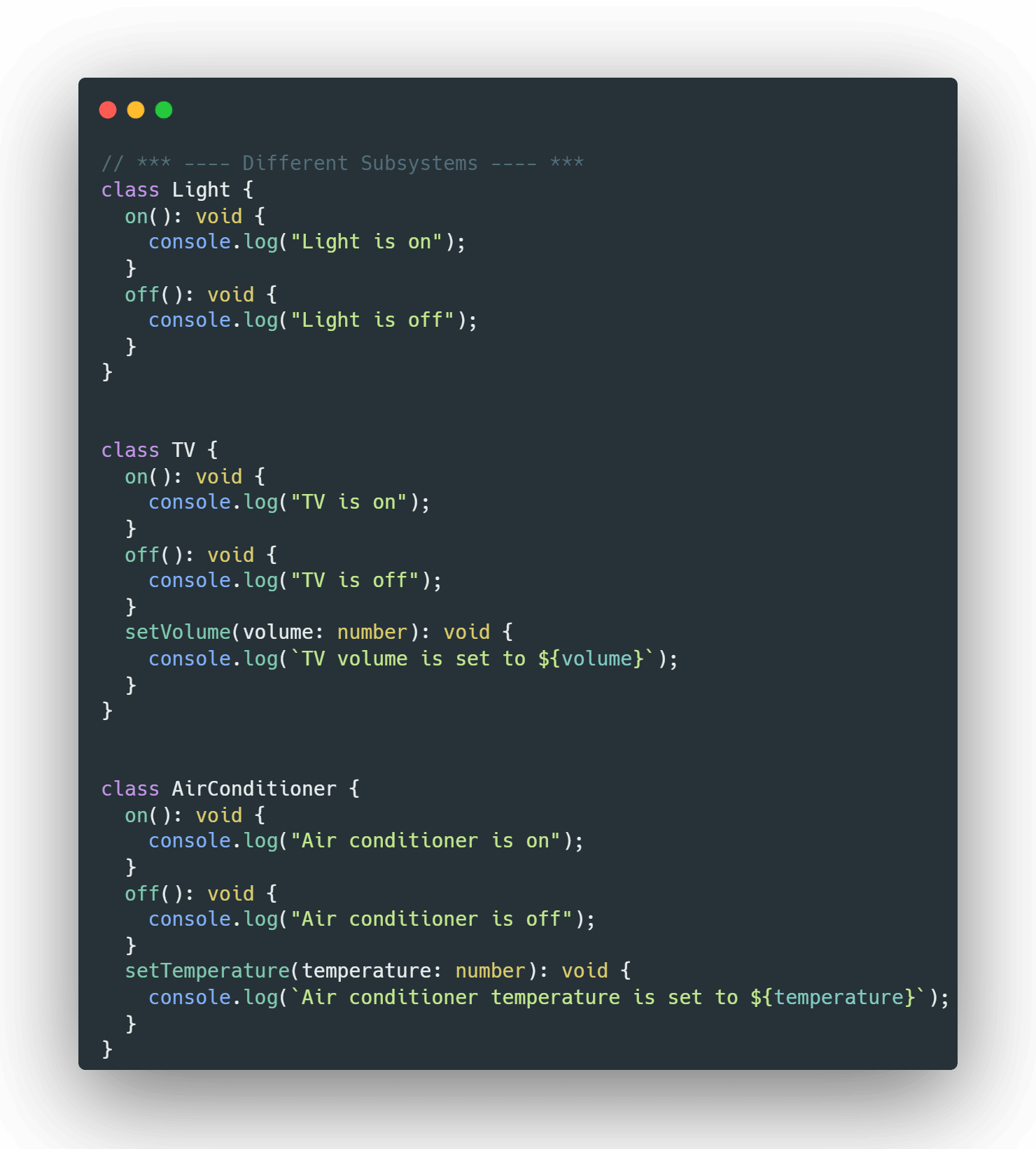
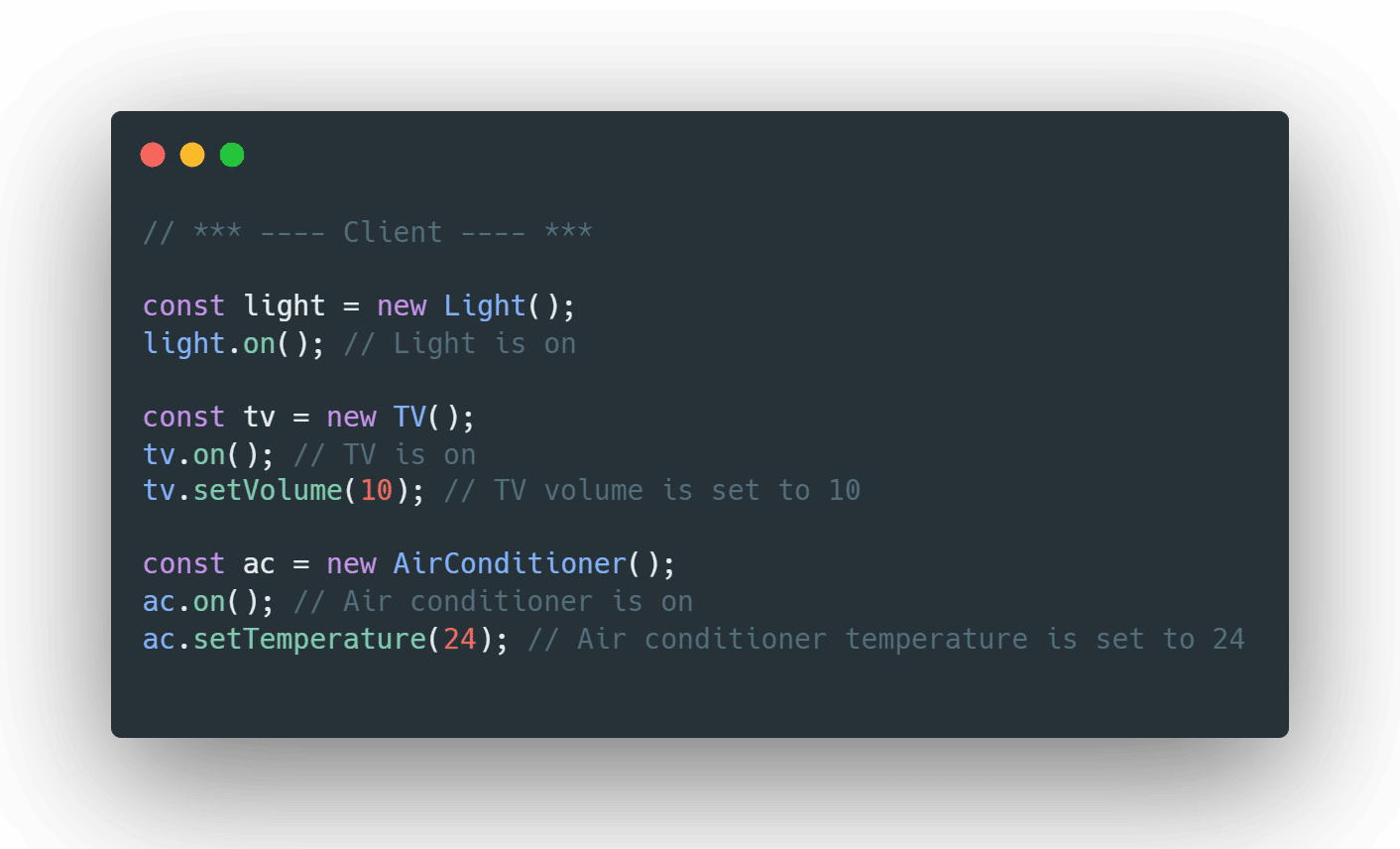
Now, let’s apply the Facade pattern to simplify the interface of the home automation system. We can create a “HomeAutomationFacade” class that provides methods to control all the devices. This class can hide the complexity of the system and provide a simple interface for clients to use.
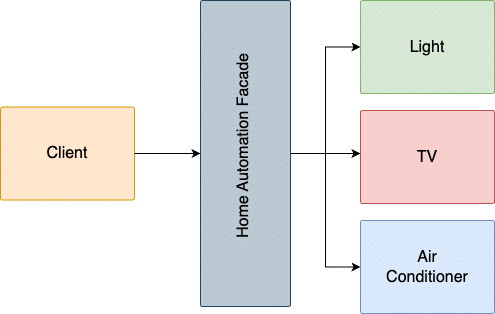
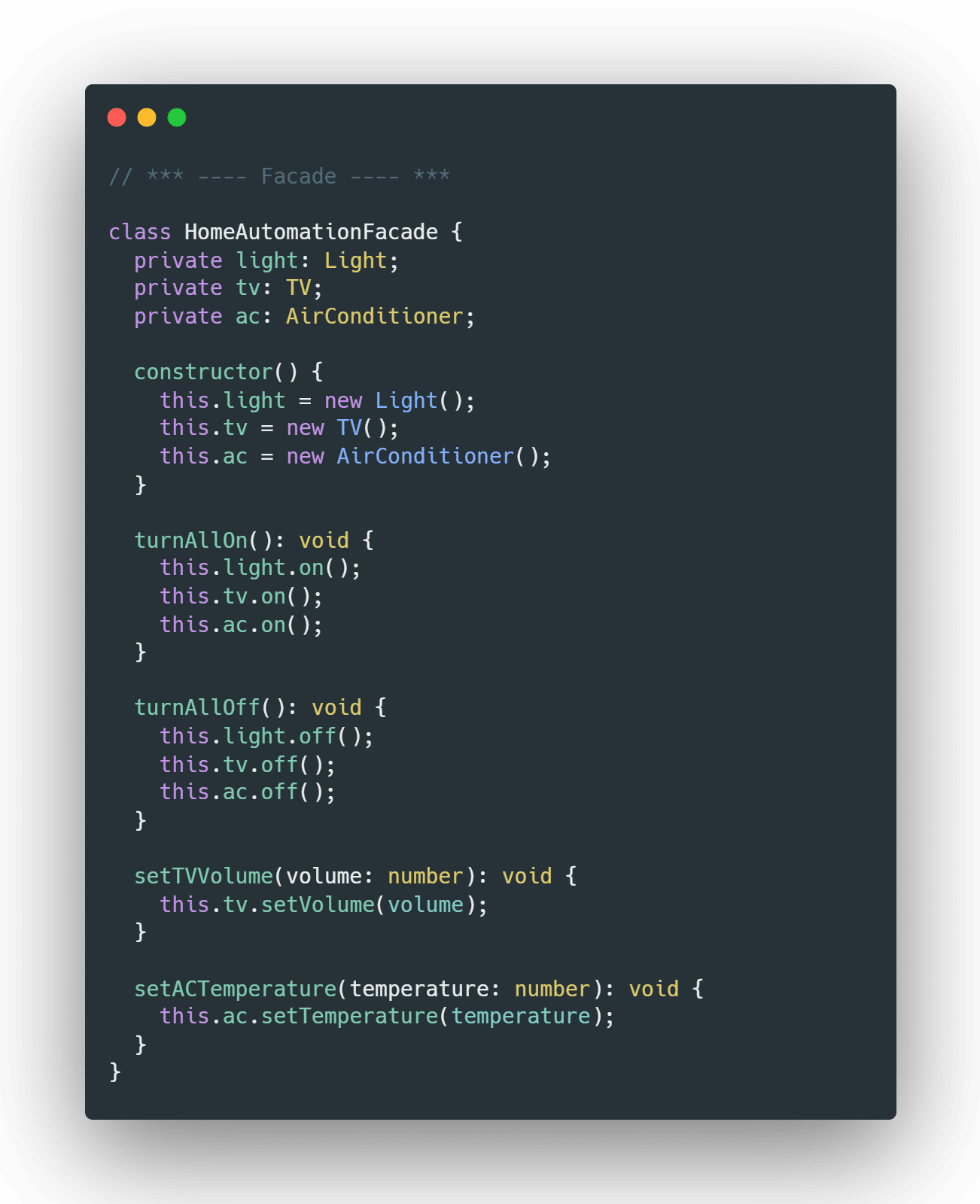
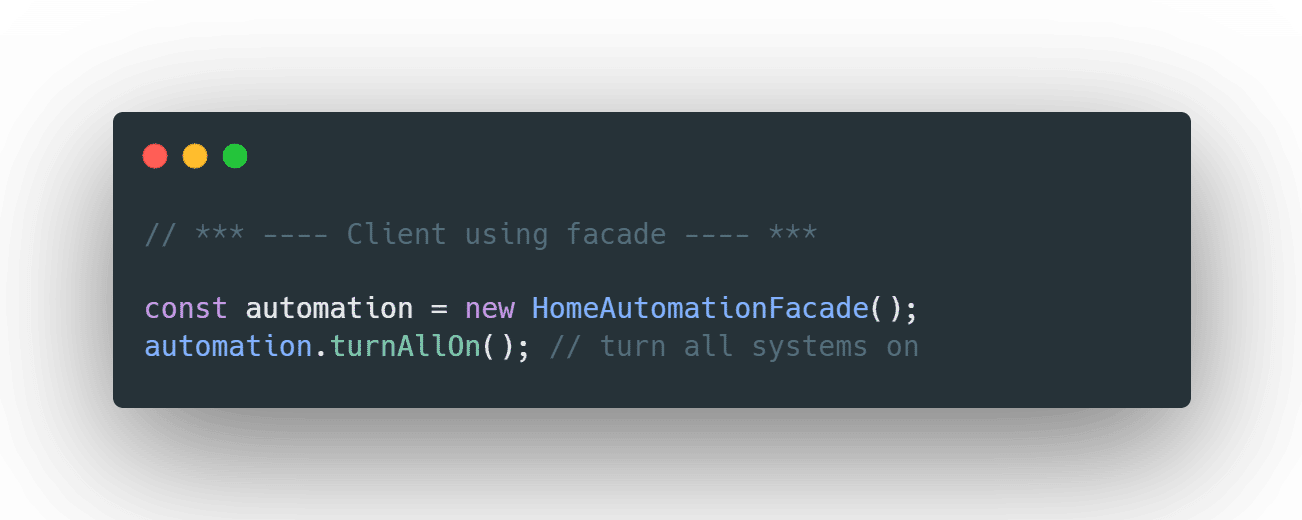
When to use Facade Pattern?
Before deciding to use the Facade pattern, here are some questions that can help you determine if it is the right choice for your project:
-
Is the system too complex to use and understand?
-
Are there too many dependencies between the subsystems?
-
Are there too many interfaces to manage?
-
Are there many client classes that depend on the subsystems?
-
Do you need to simplify the usage of the subsystems?
-
Do you want to reduce the coupling between the client and the subsystems?
If you answer “yes” to several of these questions, then the Facade pattern may be a good solution to simplify the usage of the subsystems and make them more manageable.
Pros:
-
Simplifies the usage of a complex subsystem by providing a single interface.
-
Reduces the dependencies between the client and the subsystem, making the code more flexible and easier to maintain.
-
Improves code readability and usability by hiding the complexity of the subsystem.
-
Enhances security by providing controlled access to the subsystem.
Cons:
-
Can add an additional layer of abstraction that may impact performance.
-
This may lead to the creation of a “God object” that violates the Single Responsibility Principle.
-
Can be overused, leading to unnecessary complexity.
-
May hide important details of the subsystem that are necessary for certain operations.
Strategy Pattern
A strategy pattern is a behavioral design pattern that allows an object to change its behavior at runtime by choosing from multiple algorithms. In simpler terms, it defines a family of algorithms and makes them interchangeable.
Let’s consider an example of a payment system. Suppose we have a payment gateway, and we want to provide different payment methods such as credit card, debit card, net banking, and mobile wallet. Without using the strategy pattern, we could implement the payment system like this:
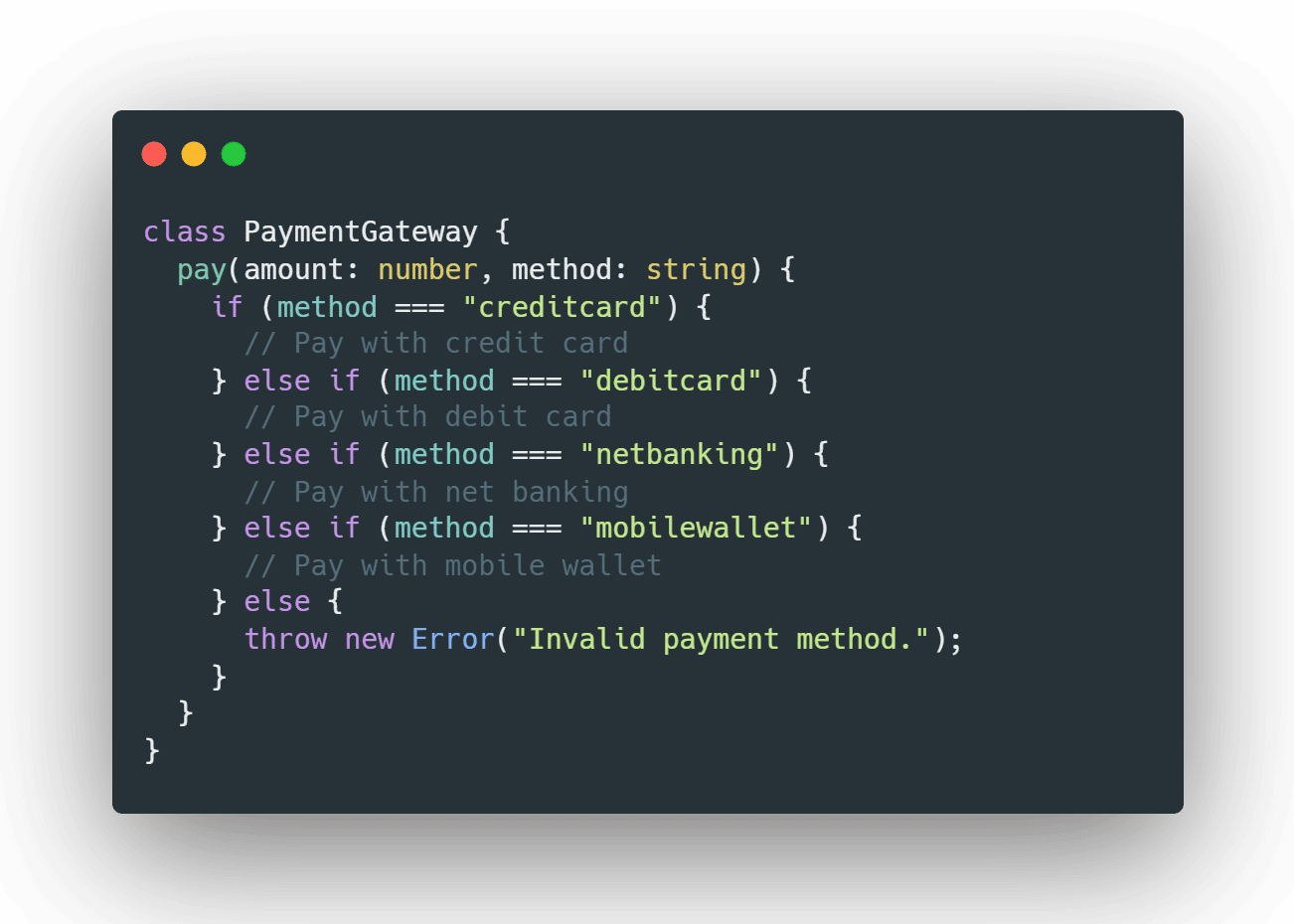
As you can see, the PaymentGateway class has a pay() method that takes an amount and a payment method as parameter. Depending on the payment method, it performs the payment process. However, this approach has some drawbacks. If we want to add a new payment method, we will have to modify the PaymentGateway class, which violates the Open/Closed Principle.
Using the strategy pattern, we can define an interface for the payment methods and implement each payment method as a separate class that implements the interface. Here’s an example:
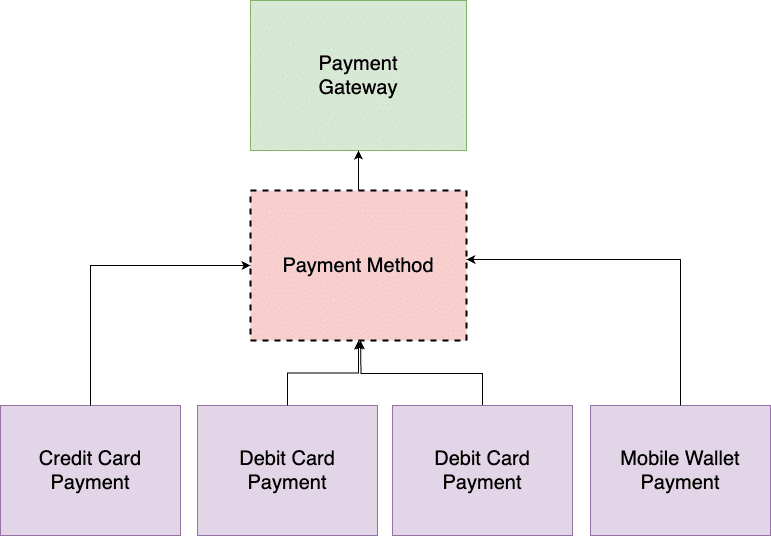
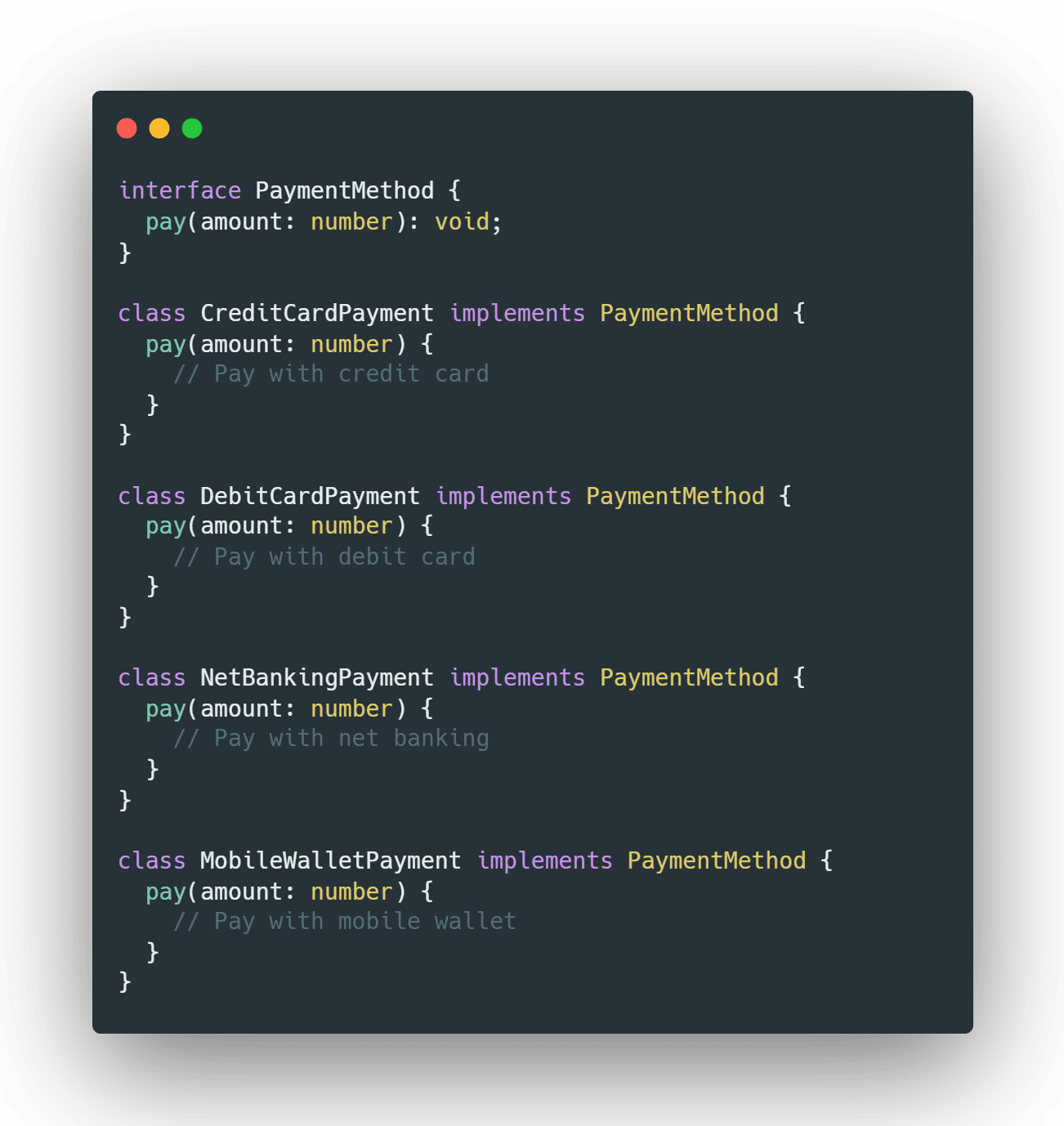
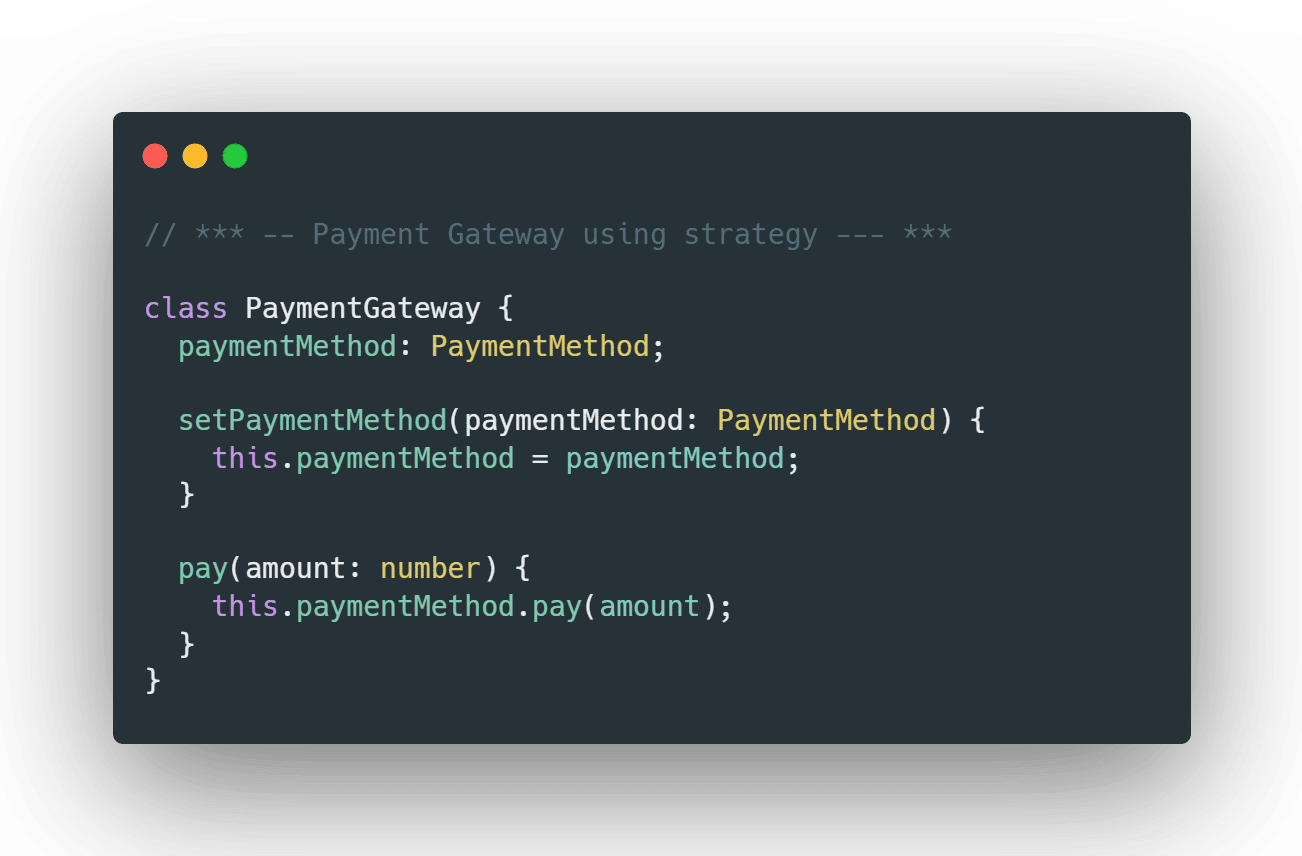
In this example, we have defined an interface PaymentMethod that has a pay() method. We have implemented each payment method as a separate class that implements the PaymentMethod interface. The PaymentGateway class has a setPaymentMethod method that sets the payment method, and a pay() method that calls the pay() method of the current payment method.
When to use Strategy Pattern?
Before deciding to use the Strategy pattern, it’s important to ask the following questions:
-
Do you have multiple algorithms that perform the same task but in different ways?
-
Do you need to switch between these algorithms at runtime?
-
Do you want to isolate the implementation of an algorithm from its clients?
-
Are you looking for a way to extend or replace individual algorithms without affecting the rest of the codebase?
-
Is the code becoming too complex or difficult to maintain due to a proliferation of if/else statements or switch statements?
By answering these questions, you can determine whether the Strategy pattern is a good fit for your specific use case. If the answers are mostly “yes,” then the Strategy pattern might be an excellent choice to consider.
Pros:
-
The Strategy pattern allows for the implementation of multiple algorithms for a given task, making it easy to switch between them at runtime without changing the code.
-
The implementation of an algorithm is isolated from the rest of the codebase, which makes it easier to maintain and modify.
-
The Strategy pattern promotes code reuse by allowing the implementation of an algorithm to be used in multiple contexts.
-
Since the implementation of an algorithm is decoupled from the rest of the code, it’s easier to test individual algorithms in isolation.
-
The Strategy pattern can be used to extend or replace individual algorithms without affecting the rest of the codebase.
Cons:
-
The Strategy pattern adds complexity to the codebase, especially if there are many different algorithms to implement.
-
Implementing the Strategy pattern requires creating multiple classes, which can lead to increased overhead.
-
It’s possible to over-engineer the Strategy pattern implementation, leading to unnecessarily complex code.
-
If there are many different algorithms, each with its own implementation class, the memory usage of the application can increase significantly.
Conclusion
Design patterns are powerful tools that can help software developers build reusable, scalable, and maintainable applications.
By understanding and applying these design patterns, software developers can write more modular, flexible, and robust code that is easier to test and maintain.
Simplify Your Code with Facade and Strategy Design Patterns. Dive in for Dev Insights at VT Netzwelt. Level up your software skills today!











